Related Research Articles
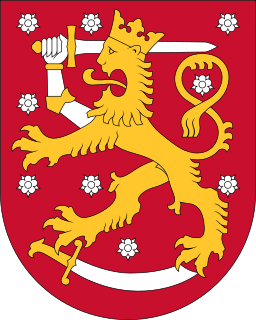
The politics of Finland take place within the framework of a parliamentary representative democracy. Finland is a republic whose head of state is President Sauli Niinistö, who leads the nation's foreign policy and is the supreme commander of the Finnish Defence Forces. Finland's head of government is Prime Minister Sanna Marin, who leads the nation's executive branch, called the Finnish Government. Legislative power is vested in the Parliament of Finland, and the Government has limited rights to amend or extend legislation. Because the Constitution of Finland vests power to both the President and Government, the President has veto power over parliamentary decisions, although this power can be overruled by a majority vote in the Parliament.

Kyösti Kallio was a Finnish politician of the Agrarian League who served as the fourth president of Finland from 1937–1940, which also included leading the country through the Winter War. He was the first President of Finland to resign and the only president to die in office. Kallio was also the only president of Finland who did not have an academic or similar degree.
The Swedish People's Party of Finland is a political party in Finland aiming to represent the interests of the minority Swedish-speaking population of Finland. The party is currently participating in the government of Sanna Marin, holding the positions of Minister of Justice and Minister for Nordic Cooperation and Equality.
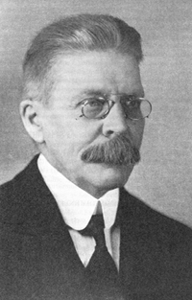
Aimo Kaarlo Cajander was the Prime Minister of Finland up to the Winter War.

The prime minister of Finland is the leader of the Finnish Government. The prime minister and their cabinet exercise executive authority in the state. The prime minister is formally ranked third in the protocol after the president of Finland and the speaker of the Parliament. Finland's first prime minister, Pehr Evind Svinhufvud, was appointed on 27 November 1917, just a few days before the country declared independence from Russia.

Karl-August Fagerholm was Speaker of Parliament and three times Prime Minister of Finland. Fagerholm became one of the leading politicians of the Social Democrats after the armistice in the Continuation War. As a Scandinavia-oriented Swedish-speaking Finn, he was believed to be more to the taste of the Soviet Union's leadership than his predecessor, Väinö Tanner. Fagerholm's postwar career was, however, marked by fierce opposition from both the Soviet Union and the Communist Party of Finland. He narrowly lost the presidential election to Urho Kekkonen in 1956.
A minister is a politician who heads a ministry, making and implementing decisions on policies in conjunction with the other ministers. In some jurisdictions the head of government is also a minister and is designated the ‘prime minister’, ‘premier’, ‘chief minister’, ‘chancellor’ or other title.

The Finnish Government is the executive branch and cabinet of Finland, which directs the politics of Finland and is the main source of legislation proposed to the Parliament. The Government has collective ministerial responsibility and represents Finland in the Council of the European Union. In the incumbent Marin Cabinet, the Government comprises 19 ministers leading 12 ministries.

Johan (Juho) Emil Sunila was a Finnish politician from the Agrarian League, the managing director of the agrarian finance board, and Prime Minister of Finland in two cabinets. He was born in Liminka.

Reijo Mauri Matias Pekkarinen is a Finnish politician, currently serving as a Member of European Parliament for Finland. He is the Centre Party of Finland deputy and secretary, having served in various cabinet position in the Finish government, including as Minister of Economic Affairs, Minister of Trade and Industry, and Minister of the Interior, as well as a member of parliament. He is known by the nickname "The Parliament Terrier".

Antti Tulenheimo's cabinet was the Government of Finland from March 31, 1925 to December 31, 1925. It was formed between the National Coalition Party and the Agrarian Party, and had four ministers from the National Coalition Party, five from the Agrarian Party and four neutral. The cabinet lasted 276 days in office. The cabinet resigned after its proposal for defense spending was defeated in the parliament.

Kyösti Kallio's second cabinet was the 13th government of Finland from December 31, 1925 to December 13, 1926. It was formed between Agrarian Party and National Coalition Party, and had six ministers from each party. The cabinet lasted 348 days in office.
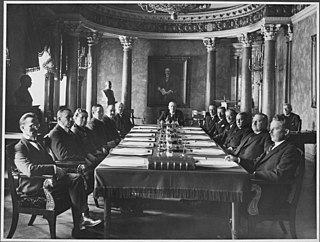
Väinö Tanner's cabinet was the 14th government of Finland, which existed from 13 December 1926 to 17 December 1927. It was a minority government led by Social Democratic Prime Minister Väinö Tanner. The cabinet's Deputy Minister of Social affairs, Miina Sillanpää, was the first female minister in Finnish history.
Toivo Kivimäki's cabinet was the 20th government of Republic of Finland. Cabinet's time period was from December 14, 1932 to October 10, 1936. It was Minority government. Many of the neutral ministers were members of the National Coalition Party without formal support of the party. Cabinet fell in 1936 by the interpellation of the opposition after its bill to reinstate the capital punishment had failed to pass. Kivimäki's cabinet was the longest government in Finland until 1987 Kalevi Sorsa's fourth cabinet.
Reino Lehto's cabinet was the 47th government of Republic of Finland. Cabinet's time period was from December 18, 1963 to October 12, 1964. It is the longest caretaker government in Finnish history.

The Social Democratic Party of Finland, shortened to the Social Democrats and commonly known in Finnish as Demarit, is a social-democratic political party in Finland. It is currently the largest party in the Parliament of Finland with 40 seats.

The third cabinet of Kalevi Sorsa was the 62nd government of Finland. The majority government lasted from 19 February 1982 to 6 May 1983. The cabinet's prime minister was Kalevi Sorsa. The Finnish People's Democratic League disapproved of the government's decision to raise the country's defence budget, which led to a governmental crisis, which culminated in the FPDL being forced to resign from the government by the prime minister on 31 December 1982. As a result of the change, the Liberal People's Party joined the coalition and, together with the rest of the previous government, formed the Sorsa IIIb Cabinet.
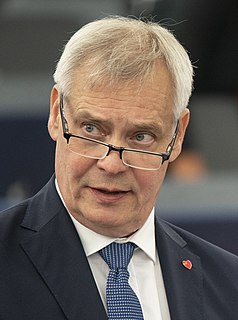
The cabinet of Antti Rinne was the 75th government of Finland. It was formed following the parliamentary election of 2019 and was formally appointed by President Sauli Niinistö on 6 June 2019. The cabinet consisted of a coalition formed by the Social Democratic Party, the Centre Party, the Green League, the Left Alliance, and the Swedish People's Party. The cabinet's Prime Minister was Antti Rinne.
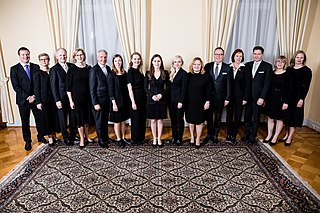
The Marin Cabinet is the incumbent 76th government of Finland. It was formed following the collapse of the Rinne Cabinet and officially took office on 10 December 2019. The cabinet headed by Sanna Marin consists of a coalition formed by the Social Democratic Party, the Centre Party, the Green League, the Left Alliance, and the Swedish People's Party.
References
- ↑ "Governments and Ministers since 1917". Finnish Government. Retrieved 2018-01-14.
